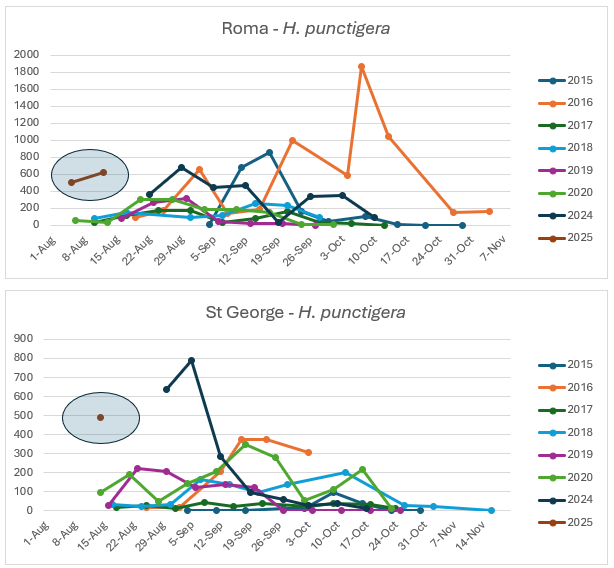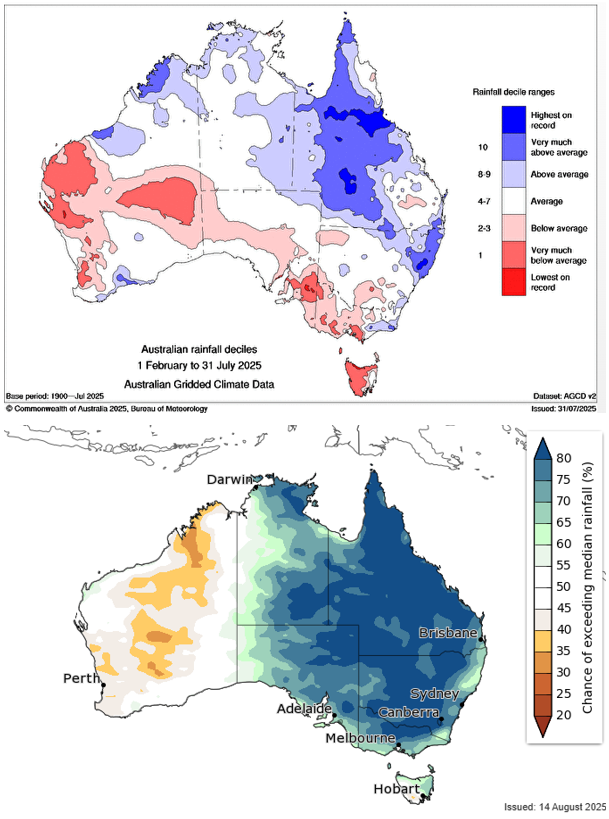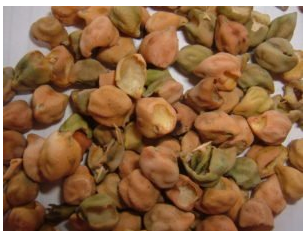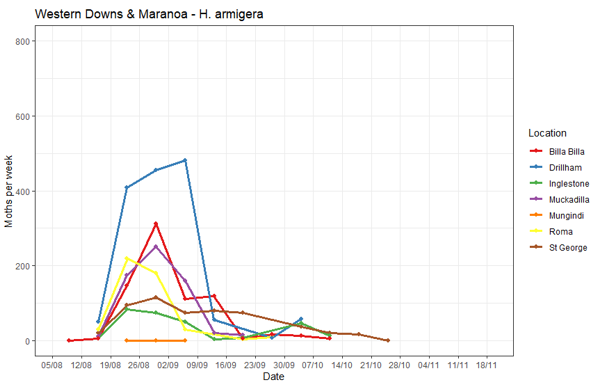Helicoverpa punctigera pheromone traps around the Maranoa, Western Downs and Central QLD regions are recording above average moth numbers. In particular, long-term sites at Roma and St George have both recorded well above their seven year average for this time of year.

Starting trap counts for 2025 (highlighted in grey) at Roma and St George are well above the numbers found in previous years.
Continued migration of H. punctigera through spring is likely, if suitable weather systems occur, and it is likely that all susceptible crops (including chickpea, canola, faba bean, spring mungbean and spring sunflower) will experience helicoverpa pressure through September and October.
Helicoverpa punctigera proliferate on native hosts in northern South Australia and far south west Queensland. Near record rainfall in these areas over the past six months, has meant a large source of wildflowers is present in these areas to support widespread high populations of H. punctigera larvae and moths. With further rainfall forecast over the next three months, it would be expected that breeding of this pest will continue.

Top: Rainfall over the past six months; Bottom: three month forecast from mid-August (source: BOM)
H. punctigera will migrate even when their inland hosts are still in good condition, but their movement from these inland breeding areas to eastern cropping regions requires weather fronts. Typically, these systems are the north-westerly winds that precede the passage of rain-bearing weather and can generate winds capable of carrying the moths long distances.
So what does this mean for me?

Helicoverpa damage to chickpea seed
Continue to monitor susceptible crops even if helicoverpa infestations have already been treated, as high moth activity puts pressure on the residual efficacy of products. Given the expectation of continued La Niña conditions until the end of the year, it is likely that chickpeas will continue to remain attractive to helicoverpa for longer. Large larvae that have been feeding on green terminal growth in a well podded chickpea crop can cause significant damage to maturing pods.
While winter cereals are not a host for H. punctigera, Helicoverpa armigera and armyworm activity is also expected to be high throughout spring, with reports of high armyworm activity already being received.
Management may become challenging as these populations respond differently to insecticides (for example, NPV is effective against H. armigera in winter cereals, but it has no activity against armyworm). Correct identification is therefore essential. Depending on average temperatures, most areas will start to get H. armigera emerging from late August. The graph below from 2019 illustrates a typical season in the Western Downs and Maranoa.

H. armigera pheromone trap catches in 2019
